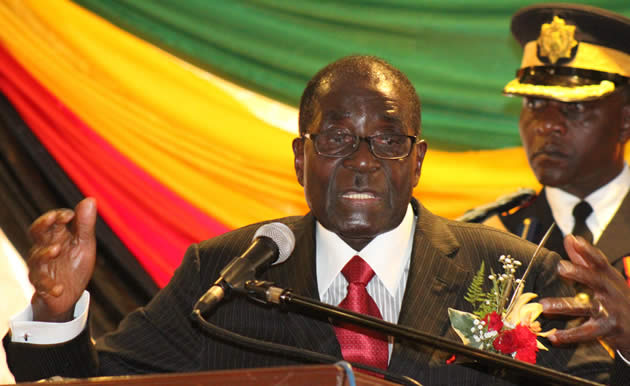Unveiling of Nkomo statue historic gesture by Govt

 Opinion Saul Gwakuba Ndlovu
Opinion Saul Gwakuba Ndlovu
The unveiling of Dr Joshua Nyongolo Nkomo’s statue at the intersection of Bulawayo’s Eighth Avenue and Main Street by President Mugabe tomorrow is a most welcome historic gesture by the Government to a man who single-mindedly pursued the liberation of Zimbabwe for more than 30 years.
Joshua Nkomo, popularly known as Father Zimbabwe, did not look back or regret once he took over the Southern Rhodesia African National Congress (SRANC) reins from the Reverend Samkange in Bulawayo in 1950.
That organisation had been in the hands of some black church leaders from the time it was founded near Makwiro by Aaron Jacha Rusike in 1934. Two good reasons can be given why the SRANC was led by men of the cloth.
One is that the white minority administration then headed by Godfrey Huggins could not suspect a more or less church-led organisation of fomenting militant opposition to its anti-African laws such as the Land Apportionment Act and the Land Husbandry Act. Very few church leaders are political militants.
The other was that church-leaders were at that time the most educated black people and were, therefore, the most “enlightened” members of their country’s black community.
When Joshua Nkomo assumed the SRANC’s top leadership, he decided to indigenise the cultural and social environment of that organisation by associating it with Zimbabwe’s traditional religion. He led a group of would-be SRANC leadership to the Mwali/Mwari/uNgwali shrine at Dula in the Esigodini district.
By basing the SRANC’s source of inspiration in the traditional culture of the people, he was in effect weakening the influence of the Christian church’s elitism and making the SRANC a people’s organisation.
The Christian church had by and large been supporting the colonial measures of Cecil John Rhodes’ British South African Company (BSAC). In the company’s attack on King Lobhengula in 1893, for example, the colonial army was accompanied by the Anglican bishop of Salisbury.
Those who went to the Dula Shrine with Joshua Nkomo in 1950 were JZ Moyo, Sikwili Khohli Moyo, William Sivako (Nleya), Grey Mabhalane Bango and Knight Thobani Maripe Khuphe. The shrine told them that it would take them 30 years to get the country back from the white minority settlers’ regime. It did!
After the Dula Shrine visit, Nkomo had to unite the black people of the country under one organisation, the SRANC. But before that was done in 1957 in Salisbury (now Harare), there was a feeling among some people who did not know Nkomo that the SRANC should be led by a black university graduate.
At that time, other black university graduates were Stanlake Samkange (a son of the Reverend) and Enock Dumbutshena. Both were school teachers, Samkange at Mzingwane Government School, and Dumbutshena at Empandeni. They both declined the request to lead the SRANC, in any case.
However, Daniel Madzimbamuto and Edward Silonda Mbakhwa Ndlovu drew the nation’s attention to the fact that Nkomo was, in fact, a holder of a Bachelor of Social Science degree.
However, Joshua Nkomo had not been distracted by that minor development. He had continued charting the SRANC’s way forward.
In 1954, teaming up with Rueben Jamela and JZ Moyo, they launched the national trade union umbrella organisation, the Southern Rhodesia African Trades Unions Congress. He was the leader of the Railways African Workers’ Union (RAWU).
After becoming the president of the enlarged SRANC following its 1957 merger with the Salisbury City Youth League led by James Robert Chikerema, Nkomo discarded his trade union responsibilities to concentrate on his enormous national duties.
The white regime had formed the Federation of Rhodesia and Nyasaland in September 1953 amid a great deal of opposition by the black masses of the component territories especially those of Northern Rhodesian (later Zambia) and Nyasaland (Malawi).
Following a joint meeting of the African National Congress of the three federal states (as the ANC was at that time the only party for the black people not only in South Africa but also in Northern Rhodesia, Southern Rhodesia and Nyasaland) in Nyasaland in 1958, the white settler administration banned that organisation throughout the federation and detained thousands of its leaders and supporters on 26 February 1959.
Joshua Nkomo was in Cairo when that happened. It became clear to him that the struggle would indeed be long and difficult. The Dula Shrine prophecy must have rung in his mind.
He decided to open an office in Cairo and make arrangements for it to be manned. He then went to the Soviet Union (the then Soviet Union) and then to China to acquaint those countries’ governments with the Southern Rhodesia colonial problems and how they could help its oppressed black people to free themselves.
Back home, the African people were not at all intimidated by that February 26, 1959 dawn raid which ended the SRANC’s life. On 1 January 1960, they launched the National Democratic Party (NDP), a much more militant organisation than the SRANC. The NDP was banned on December 9, 1961.
On December 18 1961, the black people formed the Zimbabwe African People’s Union (Zapu) with Joshua Nkomo still as the president. It was decided that should Zapu be banned, no other party should be formed but the liberation struggle should go underground.
Zapu was banned in September 1962. A split occurred in the nationalist leadership following a feeling by some that Nkomo’s leadership was not militant enough. Following that split, the Zimbabwe African National Union (Zanu) was launched on August 8, 1963 in Gweru.
The following year in April, Joshua Nkomo, Josiah Chinamano, Joseph Msika, Stanislaus Marembo, Daniel Madzimbamuto and Ruth Chinamano were rounded up and sent to a remote restriction camp near the Zimbabwe-Mozambique border, an area called Gonakudzingwa (place of the banished.)
The newly elected Zanu leadership was also picked up and dumped at Sikhombela in the Midlands. Nkomo was joined by thousands of other sons and daughters of Zimbabwe right up to virtually the time of his release in December 1974.
While still at Gonakudzingwa, he had been consulted by a number of British political leaders who included the Prime Minister, Harold Wilson, the then Commonwealth and Foreign Relations Secretary, Sir Alec Douglas Home and a few others.
Among Dr Joshua Nkomo’s notable diplomatic achievements in 1962 at the United Nations was his exposure that Southern Rhodesia (Zimbabwe) was legally a British dependency or colony in spite of whatever had occurred to it since 1923 when it attained what was called “internal self-government.”
That led to the world body bringing pressure on the United Kingdom Government to accept its responsibility on the territory. We should also observe here that Joshua Nkomo was a selfless patriot. On one very little publicised occasion less than a year before Zimbabwe’s independence, the British Commonwealth and Foreign Relations officials asked him how he would like the British government to give back the country to the people of Zimbabwe:
As they (the British) found it in 1890 or as they created it in November 1894 after the defeat by them of the Ndebele King Lobhengula when they brought the former Ndebele state together with Mashonaland chiefdoms to form Southern Rhodesia. He reacted immediately and most finally that he wanted the country back in the hands of the indigenous people as a unitary state.
Another occasion when the man showed that he had been struggling for the nation of Zimbabwe as a whole and not for power for himself as an individual was his immediate acceptance of the pro-Zanu-PF pre-independence election results without any wish to use PF-Zapu military force, Zipra, to change the situation.
Had he acted like Angola’s Jonas Savimbi, he could have caused a tragic civil war. He emphatically declared: “Ngangilwela ukuthi ilizwe libe ezandleni zomuntu omnyama, ukuthi lowo muntu omnyama ngubani, angilani lakho.”
In English, that means that he was struggling so that the country is ruled by a black person and that he was not concerned about who that black person was. What concerned him was that the masses had voted.
If that is not political selflessness at its democratic best, I do not know what it can be called. The statue will rightly remind us of this Zimbabwean political giant who took the cudgel of the war for the people’s freedom from big-hearted men such as Benjamin Burombo, Sergeant Masotsha Ndlovu and those who fell in the struggle earlier and fought the last phase and won the war.
Saul Gwakuba Ndlovu is a Bulawayo-based retired journalist. He is a war veteran who worked closely with Dr Nkomo during the liberation struggle. Ndlovu can be contacted on 0734 328 136 or [email protected].












Comments